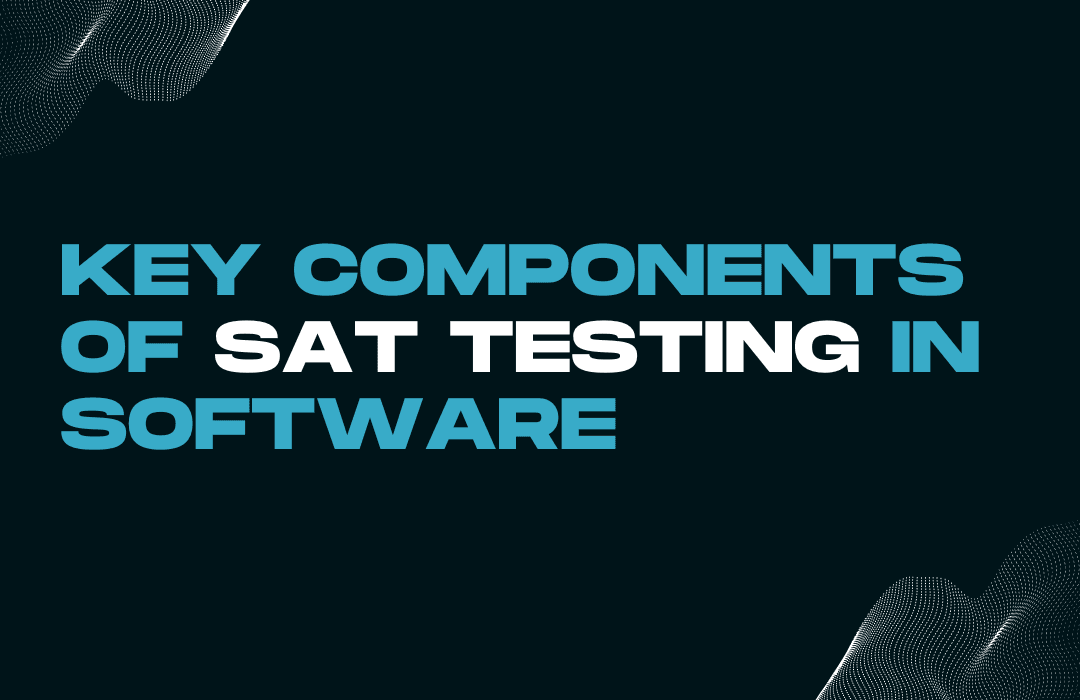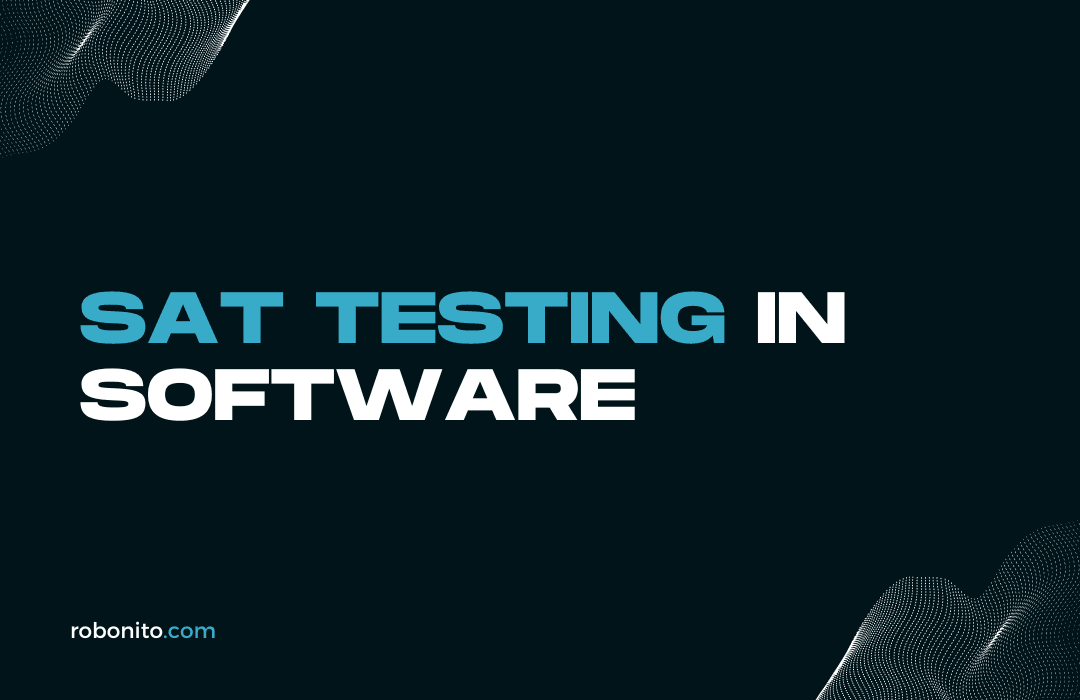In this article, we will explore the concept of SAT testing, its significance in the software development life cycle, and its benefits. So, let's dive in and understand what SAT testing is all about. Software development is a complex and intricate process that requires careful planning, testing, and implementation. One crucial aspect of software testing is SAT testing, which stands for Software Acceptance Testing.
Introduction to SAT Testing in Software
SAT testing, also known as Software Acceptance Testing, is a crucial phase in the software development life cycle. It is the process of evaluating software applications or systems against predefined acceptance criteria to determine whether they meet the desired requirements and are ready for deployment. SAT testing is typically performed by end-users or client representatives to ensure that the software meets their expectations and functions as intended.
The Importance of SAT Testing in Software
SAT testing plays a pivotal role in ensuring the quality and reliability of software systems. It helps identify any gaps or inconsistencies between the software and user requirements, allowing developers to address them before the final release. By conducting thorough SAT testing, organizations can minimize the risk of deploying faulty software, enhance user satisfaction, and maintain their reputation in the market.
Key Components of SAT Testing in Software

Test Planning
Test planning involves defining the objectives, scope, and strategies for SAT testing. It includes identifying the test environment, creating test scenarios, and allocating resources. Test planning ensures that the testing process is well-structured and aligns with the overall software development goals.
Test Design
Test design focuses on creating test cases and test scripts based on the defined acceptance criteria. It involves determining the input data, expected outcomes, and test conditions. Effective test design ensures maximum test coverage and helps identify potential defects or errors in the software.
Test Execution
Test execution involves running the test cases, capturing test results, and comparing them with expected outcomes. It aims to validate the functionality, performance, and usability of the software. During test execution, defects or issues are identified and logged for further analysis and resolution.
Test Reporting and Analysis
Test reporting and analysis involve documenting the test results, generating reports, and analyzing the overall performance of the software. It helps stakeholders make informed decisions about the readiness of the software for deployment. Test reports also provide insights into areas that require improvement or further testing.
SAT Testing Techniques
SAT testing employs various techniques to ensure comprehensive test coverage. Here are three commonly used techniques:
Black Box Testing
Black box testing focuses on testing the software's external behavior without considering its internal structure or implementation details. Testers evaluate the functionality and user interface of the software based on the provided requirements.
White Box Testing
White box testing, also known as structural testing, examines the internal structure, code, and logic of the software. Testers verify the correctness of individual components, paths, and algorithms within the software.
Grey Box Testing
Grey box testing combines elements of black box and white box testing. Testers have partial knowledge of the internal workings of the software and use it to design effective test cases. Grey box testing ensures a balanced approach between functionality and code coverage.
Benefits of SAT Testing in Software
SAT testing offers several benefits for software development projects:
-
Identifies and resolves defects early in the development process.
-
Ensures that software meets user expectations and requirements.
-
Enhances user satisfaction and overall software quality.
-
Minimizes the risk of software failure or malfunction.
-
Provides valuable insights for software improvement and optimization.
-
Validates the software's readiness for deployment.
Best Practices for SAT Testing in Software
To maximize the effectiveness of SAT testing, it is essential to follow the best practices:
-
Define clear acceptance criteria and objectives for testing.
-
Establish a well-structured and documented test plan.
-
Use a combination of testing techniques for comprehensive coverage.
-
Conduct thorough regression testing to ensure software stability.
-
Involve end-users or client representatives in the testing process.
-
Perform systematic and detailed test reporting and analysis.
Challenges in SAT Testing in Software
While SAT testing is critical for software quality assurance, it also presents some challenges:
-
Limited availability of end-users or client representatives for testing.
-
Difficulty in replicating real-world scenarios and user behaviors.
-
Time constraints for comprehensive testing within project timelines.
-
Ensuring test environments mirror production environments accurately.
-
Balancing testing efforts with budgetary constraints.
Future Trends in SAT Testing in Software
As software development practices evolve, SAT testing is also witnessing advancements. Some future trends in SAT testing include:
Increased adoption of test automation for faster and more efficient testing.
Integration of artificial intelligence and machine learning in test case generation and analysis.
Shift towards continuous testing and DevOps practices for seamless software delivery.
Emphasis on usability testing to enhance user experience and accessibility.
Conclusion
SAT testing is a vital step in the software development life cycle to ensure that software meets user expectations, functions as intended, and is of high quality. By following best practices, organizations can leverage SAT testing to identify and address defects early, enhance user satisfaction, and minimize the risk of software failure. Embracing emerging trends in SAT testing can further optimize the testing process and lead to more robust and reliable software systems.
Revolutionize your software testing with Robonito, the ultimate no-code RPA automation testing tool. Say goodbye to endless testing hours – Robonito slashes testing time by a staggering 98%! Ready to experience the future of software testing? BOOK A FREE DEMO NOW and transform your testing process today!
Frequently Asked Questions (FAQs)
Q1. What is the difference between SAT Testing in Software and unit testing?
Unit testing focuses on testing individual software components or modules, while SAT testing evaluates the software as a whole against user requirements and acceptance criteria.
Q2. Who typically performs SAT Testing in Software?
SAT testing is usually performed by end-users or client representatives who have a thorough understanding of the software's intended functionality and requirements.
Q3. Is SAT Testing in Software the final stage of software testing?
SAT testing is one of the final stages of software testing, conducted before the software's deployment. It ensures that the software is ready for use by end-users.
Q4. Can SAT Testing in Software be automated?
Yes, SAT testing can be automated using various testing frameworks and tools. Automation can streamline the testing process, improve efficiency, and reduce human error.
Q5. How does SAT testing contribute to software quality assurance?
SAT testing helps identify defects, ensure adherence to user requirements, and validate the overall quality of the software. It plays a crucial role in software quality assurance.
